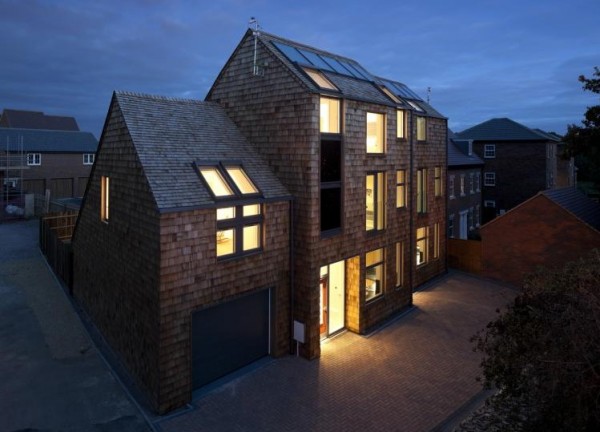We’ve been hearing about a new green building standard called Active House, so it’s time to clarify a few things about terminology. First off: yes, it looks like the name “Active House” was chosen to thumb its nose at the Passive House standard. But the two concepts are far from diametrically opposed.
Let’s go back. First there was passive solar design, a broad concept of optimizing sunlight’s effect on indoor temperature by careful placement of windows, massive walls, etc.

Later, the Passiv Haus standard was devised in Germany (where “passiv” means passive but a “haus” means a building). It extended the idea of passive solar: if you insulate well enough, it should be possible to build a building anywhere that is heated passively—by the occupants’ bodies and the appliances, as well as sunlight—and therefore barely needs an “active” heating system.
Two legitimate complaints about PH are that it unfairly applies the same standard in all climates, and that its per-square-foot metric biases it in favor of bigger buildings. (That can end up wasting energy since for any given use or number of occupants, a smaller building would likely be more energy-efficient.) Also there’s been a lot of concern about buildup of gases in houses that are airtight; the PH standard requires active ventilation that changes the air in the house sufficiently often, but we can reasonably question whether in practice these ventilation systems are effectively reaching every part of the house.
The Velux Corporation, a manufacturer of skylights, had an additional complaint about PH: it threatened to suppress sales of skylights.
So Velux developed the Active House standard which, ironically, may place even greater emphasis on passive solar design. The AH standard allows far more energy demand than PH does, but has a long list of other requirements involving fresh air, thermostats, and flexible user controls. It thus deemphasizes insulation while encouraging lots of openable windows and skylights. It seeks a bottom line of net-zero-energy or better, which seems to require at least some on-site electric power generation. But it’s flexible: a house can fall short on a few of the ten evaluation scales and still get AH certification by winning a high score on other scales.
I’d say that AH and PH are more alike than different. Both pay attention to solar gain, and neither can use old-fashioned cheap windows. Most Passive Houses could likely qualify for Active House provided that they let in enough daylight and enough natural ventilation—and most of them do.
High-performance windows gain more heat than they lose—even in northerly latitudes, and even on the north side of a house. The trouble is that they often get a house too warm during the day; it gets complicated and expensive to ameliorate daytime heat, store it to warm the house at night, and design the system to also keep the house cool in hot seasons. And ultra-high-performance windows themselves are expensive. The main reason some passive houses have tended toward fewer, smaller windows is budgetary. Conversely, the biggest difference between PH and AH may turn out to be that the latter cost more.
I also wonder whether Active House may lure some people into what I call Al Gore’s fallacy—that wasting energy is fine as long as you make up for it by throwing money at some clean energy.
If conserving energy by designing your building to be efficient is a good thing at all, then it’s just as much of a good thing regardless of the number of solar panels and wind turbines you have up on your roof.